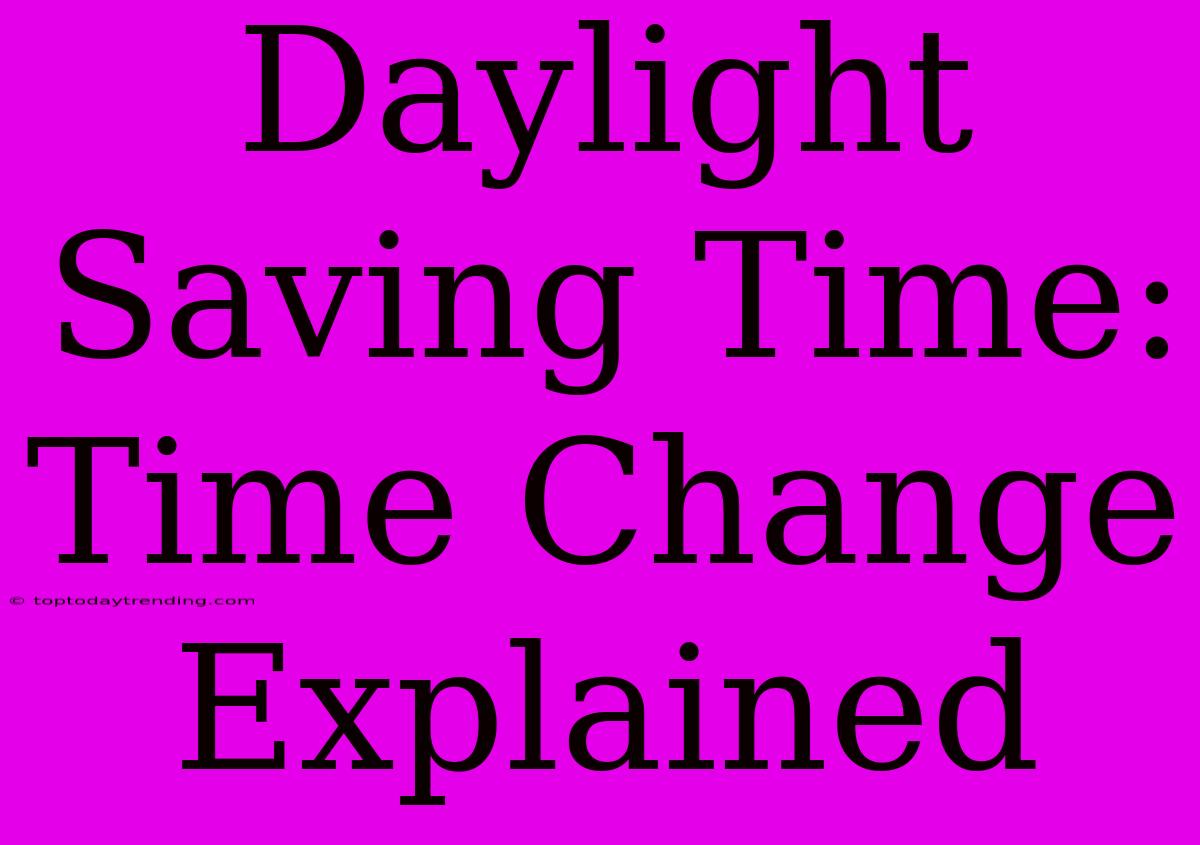Daylight Saving Time: Time Change Explained
Daylight Saving Time (DST), also known as summer time, is the practice of advancing clocks forward by one hour during the summer months. This is done to make better use of daylight hours, as the sun rises and sets later in the summer. While it is a common practice in many countries, it is not without controversy.
The History of Daylight Saving Time
The concept of Daylight Saving Time dates back to the 18th century, with Benjamin Franklin proposing the idea in 1784. The idea gained traction during World War I, as countries sought to conserve energy by extending daylight hours. Germany first implemented DST in 1916, followed by many other European countries. The United States adopted DST during World War I and again during World War II.
How Daylight Saving Time Works
DST begins on the second Sunday of March in the United States, when clocks are moved forward by one hour. This means that the sun rises and sets an hour later, but we gain an extra hour of daylight in the evening. The practice ends on the first Sunday of November, when clocks are moved back by one hour.
Benefits of Daylight Saving Time
- Energy Conservation: The most common argument in favor of DST is that it saves energy by reducing the amount of electricity needed for lighting during the evening hours. While studies have shown some small energy savings, the effect is generally considered negligible.
- Increased Productivity: Some argue that DST increases productivity by extending daylight hours and providing people with more time for outdoor activities. However, there is limited evidence to support this claim.
- Improved Safety: Supporters of DST also argue that it reduces crime rates by extending daylight hours and making streets safer. Again, there is limited evidence to support this claim.
Drawbacks of Daylight Saving Time
- Health Concerns: There is evidence that DST can disrupt people's sleep patterns, leading to increased fatigue, irritability, and health problems.
- Economic Costs: Some businesses and industries experience disruptions due to the time change, which can lead to decreased productivity and increased costs.
- Lack of Scientific Evidence: Despite the arguments in favor of DST, there is little scientific evidence to support its effectiveness.
The Future of Daylight Saving Time
The debate over DST continues, with some advocating for its permanent adoption and others calling for its elimination. In the United States, the Sunshine Protection Act of 2021 would make DST permanent nationwide. However, the bill has not yet been passed into law.
Ultimately, the decision of whether or not to adopt DST is a complex one, with both benefits and drawbacks to consider. As the debate continues, it is important to weigh the evidence and consider the potential impact on individuals and society as a whole.

